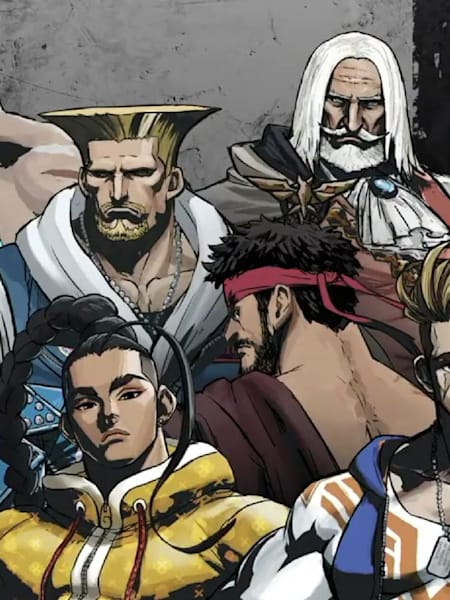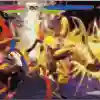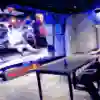Gaming

Gaming
Street Fighter 6: How to find your perfect character
Sometimes, you can't see the streets for all the fighters. If you're looking for your perfect character in Street Fighter 6, we have some helpful tips for choosing the perfect fighter.
Street Fighter 6 has 18 different fighters to choose from, and it's not always easy to decide which one to choose. If you're having problems with this or don't know which gameplay category certain characters fall into, we have a little guide here to help you find your new main character!
01
The most important rule
When you ask yourself which character you should play in a fighting game, the most obvious answer is the one you like best. And it doesn't matter whether it's the gameplay, design or the game's general feel - as long as you like a character in some way, you should play it and not be distracted by how good, bad or complex it is. If one of these factors bothers you in your Fighting Game career, you can always switch to another fighter.
Many different factors tempt players to choose their main character in a fighting game. Some like special designs, such as ninjas, monsters or girls with swords. Others choose their fighter more according to its function: Does it have a fireball? How far do the attacks reach?
Then, some players are drawn to certain archetypes. To give you a better overview of how the Street Fighter 6 characters are divided into these archetypes, we have summarized them for you:

11 min
Mind of a Beast
Daigo Umehara has been at the top of the Street Fighter world for years, but still loves each new challenge.
02
Character archetypes in Street Fighter 6
The classification of characters into different archetypes is, of course, always a topic where not every fighter falls into a clear category. That's why the following classification is more of a rough categorization.
The following qualities and gameplay styles are attributed to the different types:
Mid-range: These characters can play at different ranges and aim to dominate the neutral game, which makes it difficult for the opponent to get close to them. They often have the tools to leave the mid-range and start their own offence.
Rushdown: Characters from this category are most likely to shine when they are close to the opponent. Here, they either want to force a mix-up on block or knockdown. They usually have various options available to them to bridge the gap with the opponent and maintain their offence if the opponent is not paying attention.
Grappler: The gameplan of grapplers revolves around their powerful command throws, which you can't defend against. So the opponent's way out is to interrupt a throw with an attack, jump or risk a backdash. A grappler aims to exploit the opponent's fear of their own command throws and punish their opponent's reaction.
Zoner: If you like to keep your enemies as far away from you as possible, zoners are the right choice. They have moves that have a long-range or are suitable for making it difficult for opponents to approach. However, this is not the entire game plan for characters in this category. It is often important to switch to your own offence at the right moment and put your opponent under pressure at close range.
03
Find your comfort zone
What is even more important for many than the archetype a character ends up in is how the fighter "feels". This category does not necessarily dictate whether you have to act offensively or defensively. It makes sense for most rushdown fighters to be primarily on the offensive. For some others, it's not so clear. Roughly speaking, the characters in Street Fighter 6 currently fall roughly into this matrix:
The following things are relevant here per playstyle:
Offensive: Here, characters show their greatest potential when they have an advantage and force their opponent to block. Fighters like Ken or Cammy have moves that move them forward and give them another turn to keep up the pressure. Blanka and Kimberly, on the other hand, have tools that grant them an extended mixup should they get a knockdown in the corner.
All-rounder: They have good tools to play the game at medium or long range. These can be projectiles that hit from full screen or attacks that control the space above and/or in front of them. Although they also have offensive options, these are not necessarily as powerful as other characters.
Defensive: Characters in the defensive category excel at conditioning their opponents. They have very good moves that help them to react to their opponent's actions or force certain reactions. They often have tools that make an approach very difficult. Examples are E. Honda's headbutt or Dhalsim's normal moves. Defensive characters often have a slower, more methodical playstyle.

49 min
The Art of Street Fighting
The world's top Street Fighter V players prepare for the fight of their lives at Red Bull Kumite.
04
In-game tools to get to know characters
Street Fighter 6 offers several ways to understand, get to know and try out characters. In the Fighting Grounds, you will find a guide for each character. These explain their moves and game plan.
You can then familiarise yourself with the moveset in the Combo Trials and learn combos for different situations. Common scenarios such as anti-air punishes and super arts combos are covered here.
Ultimately, it is very helpful to simply play the character you are interested in. You can often tell relatively quickly whether it feels "right". So, use the guidelines from the paragraphs above to narrow your selection and dare to experiment with different fighters. There is certainly a suitable lid for every pot in Street Fighter 6.
Part of this story












